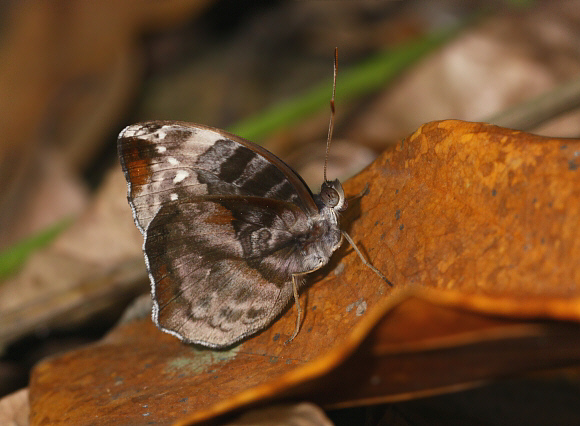
Introduction
The genus Cynandra is very closely related to Euriphene, and comprises of a single species opis.
The upperside of the male butterfly is very similar in appearance to Euriphene barombina and it’s brethren, but has broader, darker markings, and unlike any Euriphene species it reflects a brilliant blue sheen when seen in sunlight. The female is completely different to the male, being patterned in brown and cream above, in the style of Catuna and Bebearia females.
Cynandra opis is found throughout the forested regions of sub-Saharan Africa from Sierra Leone to Uganda and n.w. Tanzania.
Habitats
This species is found in tropical rainforest habitats, including degraded forest.
Lifecycle
The larval foodplant is thought to be Dissotis ( Melastomaceae ).
Adult behaviour
The butterflies are only active in sunshine, and are most often seen in the morning. Both sexes spend most of their time sitting motionless amongst leaf litter, with their wings held erect, but males periodically emerge from the undergrowth to bask on low foliage, in places where dappled sunlight reaches the forest floor.
